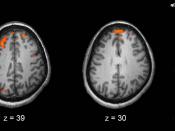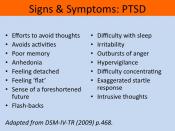Imagine staying in the same statue position for days at a time, or until you are forced to move by someone. Imagine living in total fear of the word and not trusting anyone, not even your own family. Just think⦠looking at everyone around you and only seeing grossly deformed creatures. This is how a schizophrenic has to live everyday.
Schizophrenia is a disease of chemicals in the brain. It is one of the most disabling and emotionally devastating illnesses know to man. 1 out of 100 people in this country develop schizophrenia. Schizophrenia can affect anyone at any age, most cases develop between the ages of 16 and 25. It often starts out slow and progresses to a severely disabling mental illness.
Researchers now agree, that while they don't know the actual "causes" of schizophrenia, they do have a very good idea of what the causes are. One of the causes, they think, is Biochemistry.
This is where there is an imbalance in the neurotransmitters causing little communication between brain cells. Another cause is Molecular biology, which means that people with schizophrenia have an irregular pattern of certain brain cells. The last thing that they think that may be causing schizophrenia is the genetics of an individual. Genetic researching continues, but they have not yet found a gene for schizophrenia. Schizophrenia does occur more in males but many people with schizophrenia have no family history of the illness.
Symptoms and signs of schizophrenia are widely varied and they include the entire range of human mental activity. The symptoms are most commonly associated with the illness are called positive symptoms. They denote the presence of grossly abnormal behavior and hallucinations. Perceived visions occur that are extremely vivid. When the schizophrenic comes in contact with someone they become grossly deformed, their skin peeling away to reveal decomposing inner muscle and organs. Buildings and rooms spin, people's voices either ramble in alien tongues or screams. Hallucinations cause people to see or hear things that aren't really there. Three fourths of schizophrenics hear voices that aren't there during there illness.
Mood symptoms, usually in the form of depression, may be one reason for high rate of attempted suicide in schizophrenics.
Disorientated thinking, speech and behavior affect most people with this illness. They are also very slow at things since they have hard times processing it in their brains; their thoughts come and go.
There is also something called negative symptoms, which include flatness of expression and the inability to start and follow through with activities. These symptoms reflect the lack of pleasure or interest in life. "Negative" does not mean a persons attitude but the lack of certain characteristics that should be there.
The Catatonic-type schizophrenia is much less common. The person slows down normal life. The patient stays in statue position for days at a time or until he or she is forced to move by someone else. This person cannot do anything for him/her self. This individual is also totally in fear of the world. For example, you can tell them the most disturbing news like someone they love and are very close to has died and they won't show any emotion. The detachment is only superficial. Inside they are screaming with emotions and anger.
There are some treatments for schizophrenia. Anti-psychotic drugs are often effective in treating certain symptoms of schizophrenia particularly hallucinations and delusions. Drugs such as clozapine, risperdone and olanzapine are used to treat schizophrenia. These drugs are not helpful with reduced motivation and emotional expression symptoms. Some people choose to quit taking medications because the side effects are so unpredictable. Eventually, they get back on there medication because the symptoms of schizophrenia are much worse. Many people choose to go through therapy, either in groups or individually. Both methods of therapy show some promise for success.
The goal is to find a cure for schizophrenia. Researchers, doctors, psychiatrists and health professionals from around the world continue to search for this common goal. Advances in the last 20 years have enabled schizophrenics to live relatively normal lives. With continued progress in schizophrenia research, hopefully, the next 20 years will provide a cure for this mental illness.





